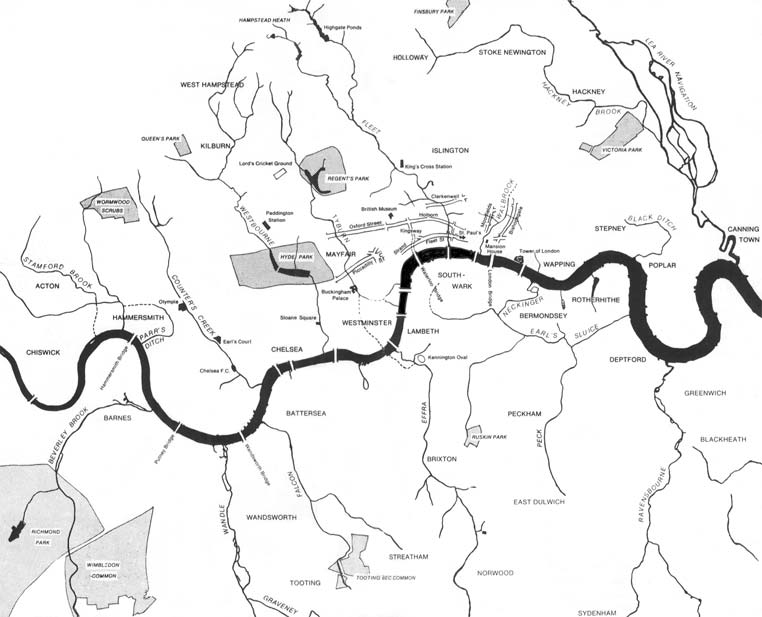
As chair of the London Waterways Commission (LWC) l have noticed that Londoners’ interest in their waterways has been greatly enhanced in recent times. You only have to look at the great success of cultural events like the annual Thames Festival on the South Bank, the Canal Cavalcade in Little Venice and the Angel Festival in City Road Basin to appreciate that we are increasingly identifying with our waterways. Some have even suggested that this marks the revival of Londoners’ spiritual relationship with the Thames, as identified by Peter Ackroyd in his book Thames: Sacred River.
However, while Londoners have rediscovered the Thames and the canals, they are less aware of the lost rivers that run under our city. For example how many of us know that in central London the river Westbourne flows into the Serpentine in Hyde Park, as well as the River Tyburn into the Regent’s Park lakes? Or that the river Fleet runs from Hampstead Heath to the City? For that matter how many residents of Brent know that their borough is named after a river that runs beneath it? Since becoming chair of the LWC l myself have discovered rivers south of the Thames that I did not previously know existed, such as the Quaggy in Lewisham and the Wandle in Wandsworth.
Hopefully, we are now witnessing an awakening of interest in this issue. Last week l spoke at a public meeting organised by the Friends of Regents Canal, Islington branch, where the topic of discussion was the City Road Basin development, yet in a contribution from the floor we were urged not to forget the river Fleet as it flows through Camden and Islington and major interchanges like Kings Cross. In a recent letter to the Guardian, it was revealed that Housmans, the celebrated radical bookshop in Caledonian Road, regularly suffers the flooding of its basement due to its situation above the Fleet.
So l welcome the recent launch of the London Rivers Restoration Plan (LRAP) by the Environment Agency. Under this plan it is intended that we will have 15 km of river restored and 14 channels uncovered over the next six years. LRAP’s website will also become the “one point of contact” for all the river restoration works occurring in London, keeping Londoners informed about the various stages reached in their development. This will certainly help with the planning process and contribute to sustainable regeneration through the implementation of the Blue Ribbon policies within the London Plan.
Yet when LRAP is completed 70 per cent of London’s 600 km of river network will still be covered over. Perhaps it is time we identified these hidden rivers in some way, particularly the Westbourne, Tyburn and Fleet which flow unseen through central London boroughs like the City of Westminster, Camden and Islington.
My proposal is that these hidden waterways should be marked by simple blue lines along the course of the rivers, similar to the existing yellow or red lines on the roads. The blue line markings would tell Londoners where these waterways are and inform people about this important but neglected aspect of our urban landscape.
I trust l will get support from local people, so that some day soon we may have blues lines going through Central London showing clearly where the rivers are buried beneath our roads and buildings.
Finally, for those interested in the history of our lost rivers there is no better reference then Nicholas Barton’s excellent book The Lost Rivers of London.
Pingback: Revive hidden rivers of London to reduce flood risk | Murad Qureshi AM